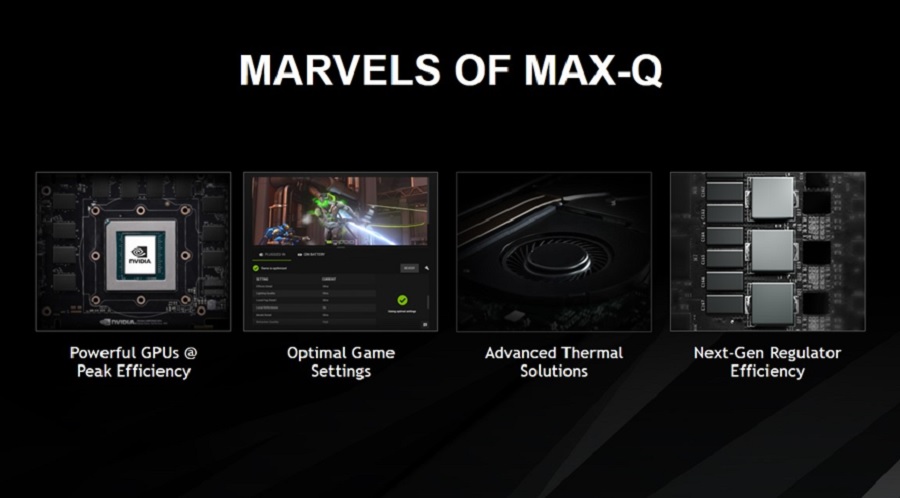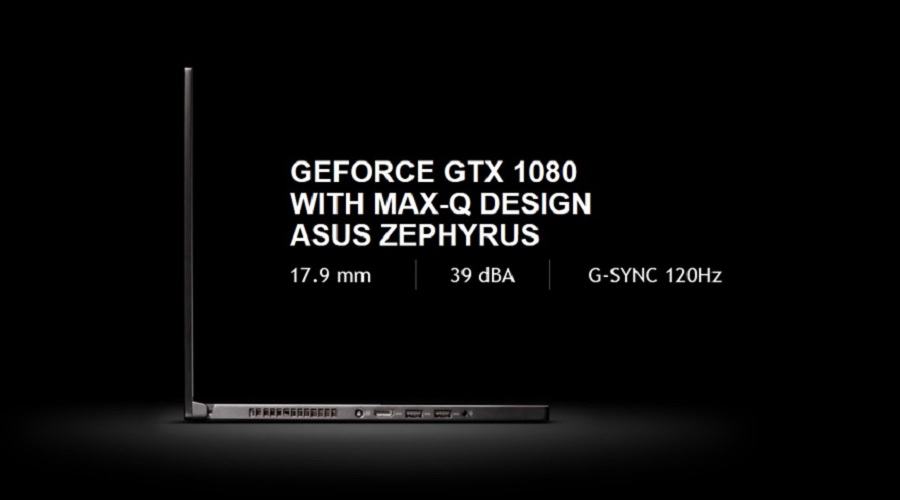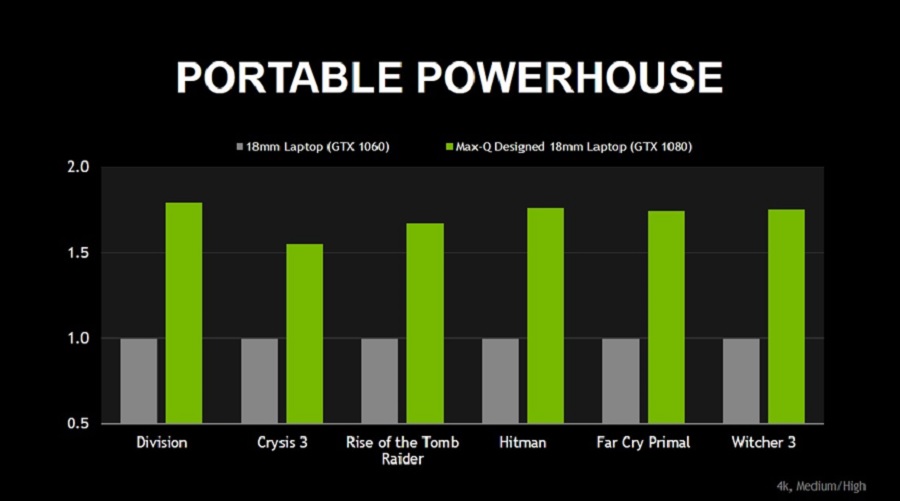Last night, Nvidia CEO Jen-Hsun Huang announced Max-Q, a new approach to designing gaming laptops to deliver three times the performance in a third of the size of previous laptops. In doing so, he held up a 10-pound gaming laptop from a few years ago and compared it to a lighter and thinner laptop from Asus.
And today, Nvidia’s Mark Aevermann, director of notebook product management, further explained how Max-Q makes that possible. He noted that five years ago, efficient mainstream gaming laptops were just a dream, and the total market was about 200,000 systems a year. It was a niche market. In 2016, more than 10 million gaming laptops shipped, or more than the number of Xbox One game consoles sold.
“Gaming notebooks are a force today, and they’re the fastest-growing platform out there,” Aevermann said.
But gaming notebooks could still be lighter and more affordable. So, in partnership with original equipment manufacturers (OEMs), Nvidia set about to redesign notebooks to be more efficient, without changing the graphics chips that ship with them.
June 5th: The AI Audit in NYC
Join us next week in NYC to engage with top executive leaders, delving into strategies for auditing AI models to ensure fairness, optimal performance, and ethical compliance across diverse organizations. Secure your attendance for this exclusive invite-only event.

Above: Nvidia’s Max-Q improvements.
In one of the biggest changes, Nvidia figured out the peak efficiency for its graphics processing units. It found that running chips at peak performance cost a huge amount in terms of power consumption. By throttling back just a little, the power efficiency became much more manageable.
“Peak performance is not peak efficiency,” Aevermann said. “The last little bits of performance cost a tremendous amount of power.”
Nvidia also looked at the optimal game settings, advanced thermal solutions and software drivers that make use of them, better acoustics, and efficient power regulation.
Max-Q is a term taken from NASA’s mission to launch man into space. It is defined as the point at which the aerodynamic stress on a rocket in atmospheric flight is maximized. Thus, the design of the rocket is precision-engineered around Max-Q.

Above: New Asus gaming laptop with Nvidia Max-Q.
“It’s a radical rethinking of how we design notebooks,” he said. “It’s a holistic approach to designing notebooks, focused on finding every last bit of efficiency we can.”
The challenge wasn’t easy, as the Nvidia GeForce GTX 1080 consumed about 180 watts, but it had to fit in a chassis that could accommodate no more than 90 watts. By working with the computer makers, Nvidia worked to get a 1080 GPU into an 18-millimeter thick chassis that in the past could only accommodate a slower Nvidia GeForce GTX 1060 graphics chip.
Nvidia also developed something called WhisperMode, which paces a game’s framerate while configuring the graphics settings for optimal power efficiency. This reduces the noise that the machines make. Nvidia targeted sound levels of 40 decibels or less, or close to the background noise in the room. That means the laptop’s noise level won’t force you to wear headphones while playing games such as Overwatch.
The results are impressive. Five years ago, a gaming laptop with a GTX 880M graphics chip were 51 millimeters thick and weighed 10 pounds. Now the new laptop from Asus is 17.9 millimeters thick. It weighs 5 pounds, and it has 3.3 times the performance with a 1080 GPU.

Above: Nvidia’s Max-Q delivers better performance on PC games.
“As a gamer you have a choice of an incredibly powerful notebook that is thin, light, and powerful,” Aevermann said. “It’s on par with the flagship GPUs that are available on the market today.”
One of new laptops is the Asus Rog Zephyrus, which is 17.9 millimeters thick and weighs 4.8 pounds. Its sound level is 39 decibels, and it uses Nvidia’s GeForce GTX 1080 GPU and an Intel Core i7-7700HQ processor. It has 16GB of main memory, onboard SSD storage, and it has a 15.6-inch full HD screen.
Meanwhile, Acer announced its Triton 700 laptop. It sports a 15.6-inch HD IPS screen. It has options for an Intel Core i5-7300HQ or Core i7-7700HQ processor, up to 32GB of DDR4 main memory, and choices of various GTX 10 series GPUs. It weighs 5.7 pounds, and it will start at $3,000. The Triton 700 is 18.9 millimeters thick. It will be available in August.
The Max-Q laptops are expected to debut as early as June 27.
“There are laptops coming from every major OEM” with Max-Q designs, Aevermann said. “These are using the exact same GPUs. We haven’t changed the chips at all.”
Asked why someone would want to use a 1080 GPU in WhisperMode, essentially taking it down to the performance of a 1060 GPU, Aevermann said the use cases include playing a game on a couch with other people in the room. You don’t want your machine to make so much noise that it disturbs them. Or you might not want to play a game with headphones on.


